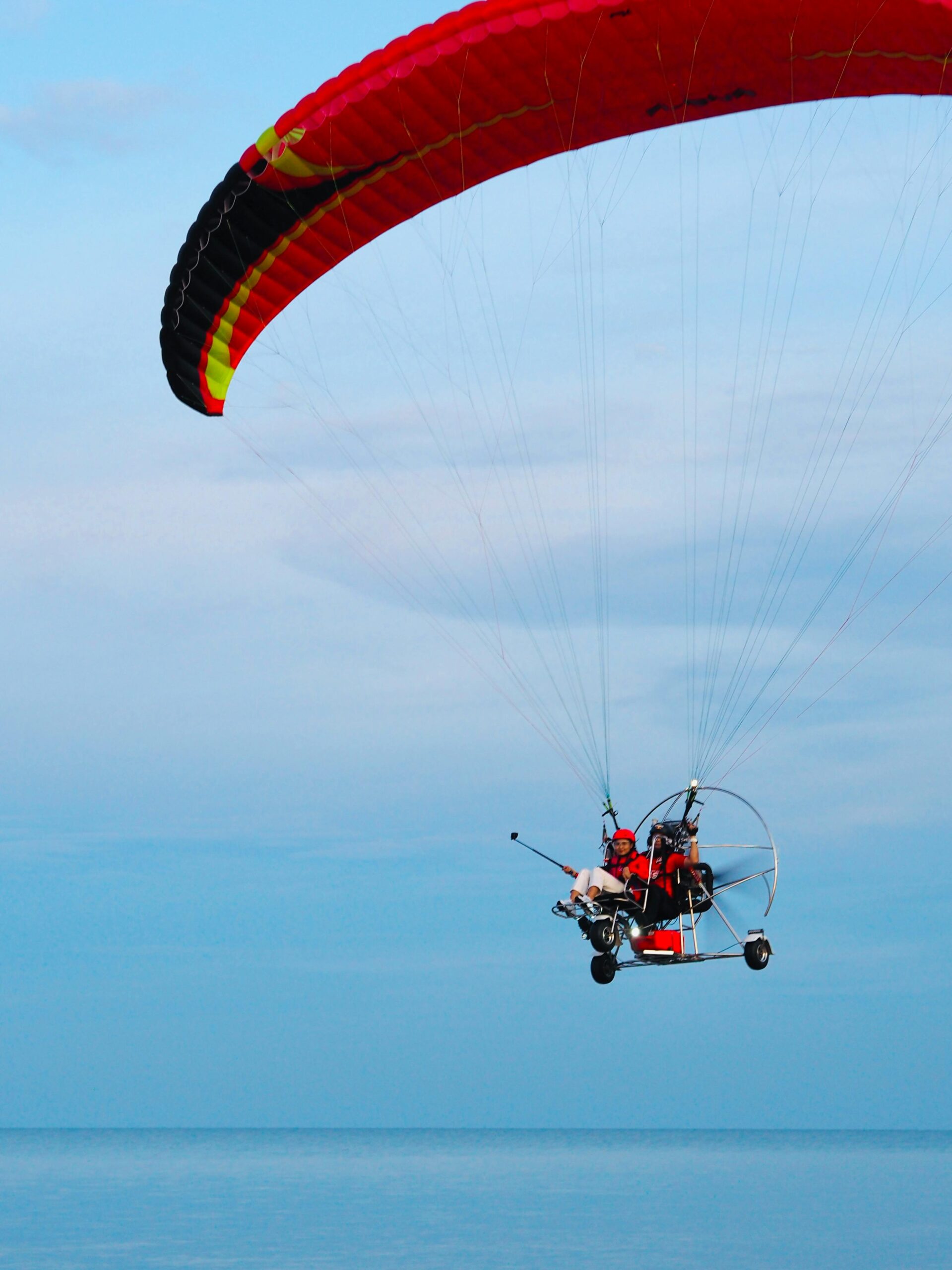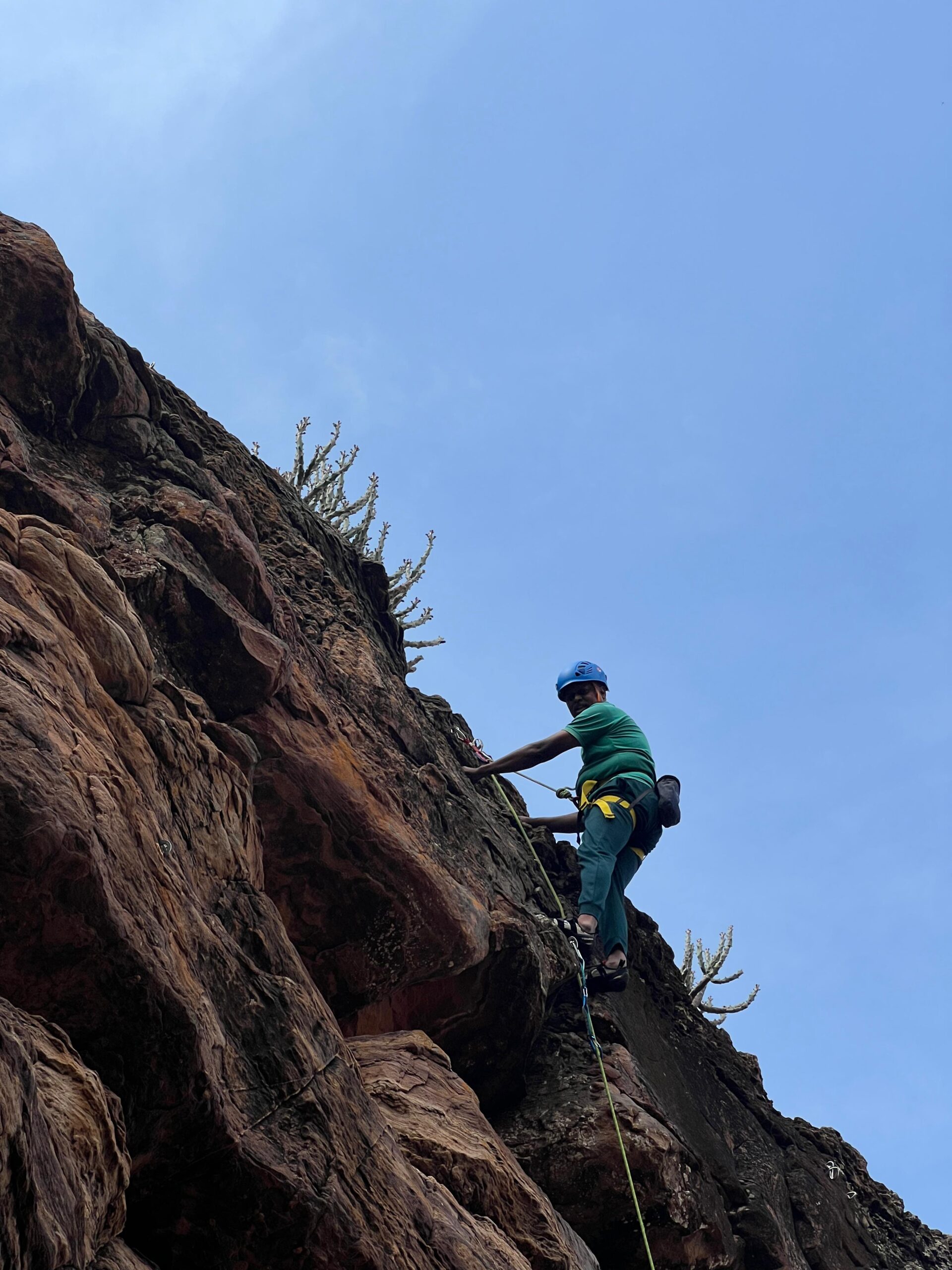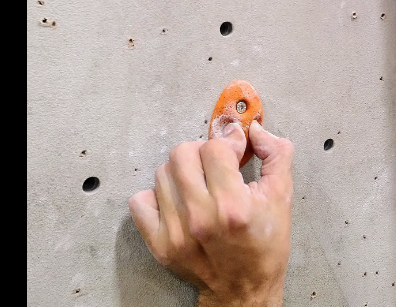Paramotor Flying: Your Gateway to Powered Paragliding Adventures
Imagine soaring through the skies, feeling the wind on your face, and taking in breathtaking views, all without the need for an airplane. That’s the magic of paramotor flying, a form of powered paragliding that combines the thrill of free flight with the convenience of motorized propulsion. Whether you’re an aviation enthusiast or simply seeking a new adventure, paramotor flying offers an accessible and exhilarating way to explore the skies.
What is Paramotor Flying?
Paramotor flying involves piloting a paraglider equipped with a lightweight motor and propeller strapped to your back. The motor provides thrust, allowing you to take off, maintain altitude, and even climb without needing a slope or wind for lift. Paramotors can be launched on foot or with a trike (a wheeled frame), making it one of the most versatile forms of personal aviation.
Why Try Paramotor Flying?
- Freedom to Explore: With a paramotor, you’re free to take off from open fields, beaches, or other suitable locations, offering a bird’s-eye view of landscapes you’d never see otherwise.
- Accessible Adventure: Paramotor flying doesn’t require a pilot’s license in most countries, making it more accessible than traditional aviation.
- Compact and Portable: Unlike other aircraft, paramotors are lightweight, portable, and relatively easy to store and transport.
- Cost-Effective: Compared to other forms of aviation, paramotors are affordable to own and maintain.
- A Personal Journey: Experience the joy of flying on your own terms, at your own pace.
How Does Paramotor Flying Work?
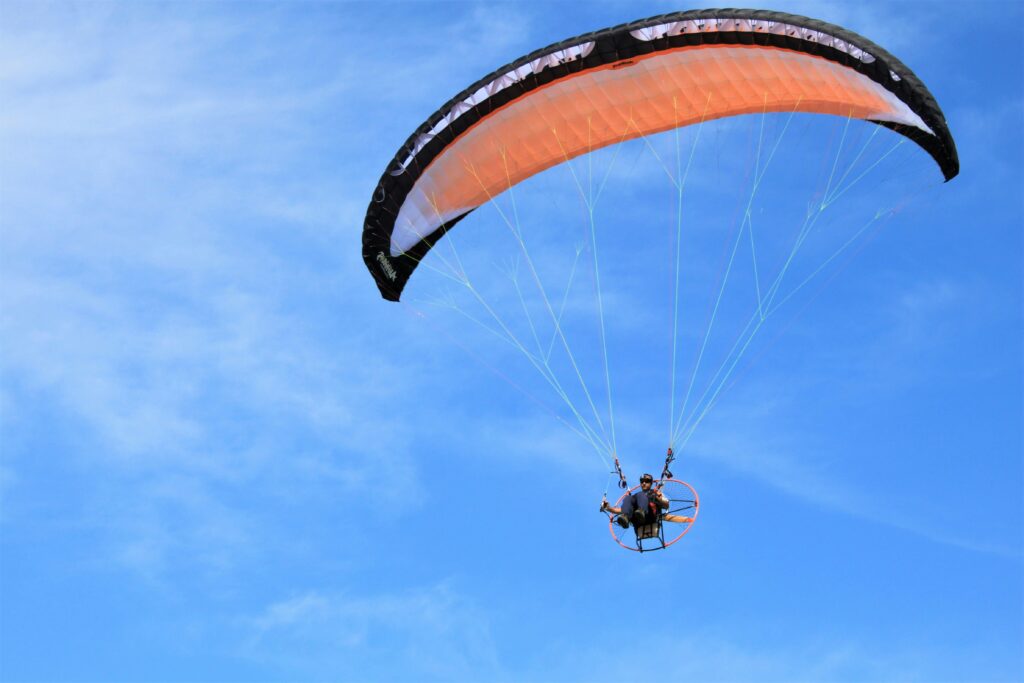
- Equipment: A paramotor setup includes a paraglider wing, a motor unit, and a harness. The motor provides the thrust needed for takeoff and flight.
- Takeoff: On foot launches, you’ll run a short distance to inflate the wing and gain lift. With a trike, you’ll accelerate until airborne.
- Flight: Once in the air, the motor keeps you aloft, while steering is controlled by pulling on the paraglider’s brake lines.
- Landing: Reduce thrust and glide gently to the ground, controlling your descent with the wing.
Best Destinations for Paramotor Flying
- Bali, Indonesia: Fly over lush rice terraces and pristine beaches.
- Arizona, USA: Explore the vast desert landscapes and iconic red rock formations.
- Loire Valley, France: Glide above historic castles and rolling vineyards.
- Himalayas, Nepal: Experience unparalleled views of towering peaks.
- Coastal England: Discover stunning cliffs and picturesque seaside villages.
Learning to Fly a Paramotor
Paramotor flying is relatively straightforward to learn, with most people requiring 7-14 days of training. Training covers:
- Ground Handling: Mastering control of the paraglider wing on the ground.
- Motor Operation: Understanding how to safely start, stop, and operate the motor.
- Flight Techniques: Learning takeoff, in-flight control, and landing procedures.
- Safety Practices: Ensuring you understand weather conditions, airspace regulations, and emergency procedures.
Safety Tips for Paramotor Flying
- Check Weather Conditions: Calm winds and clear skies are ideal for paramotor flights.
- Inspect Your Gear: Regularly check your motor, wing, and harness for wear or damage.
- Follow Training Guidance: Never skip safety protocols taught during training.
- Wear Proper Gear: Use a helmet, gloves, and protective clothing to ensure safety.
- Stay Alert: Be mindful of other aircraft, obstacles, and changing weather conditions.
Why Paramotor Flying is Growing in Popularity
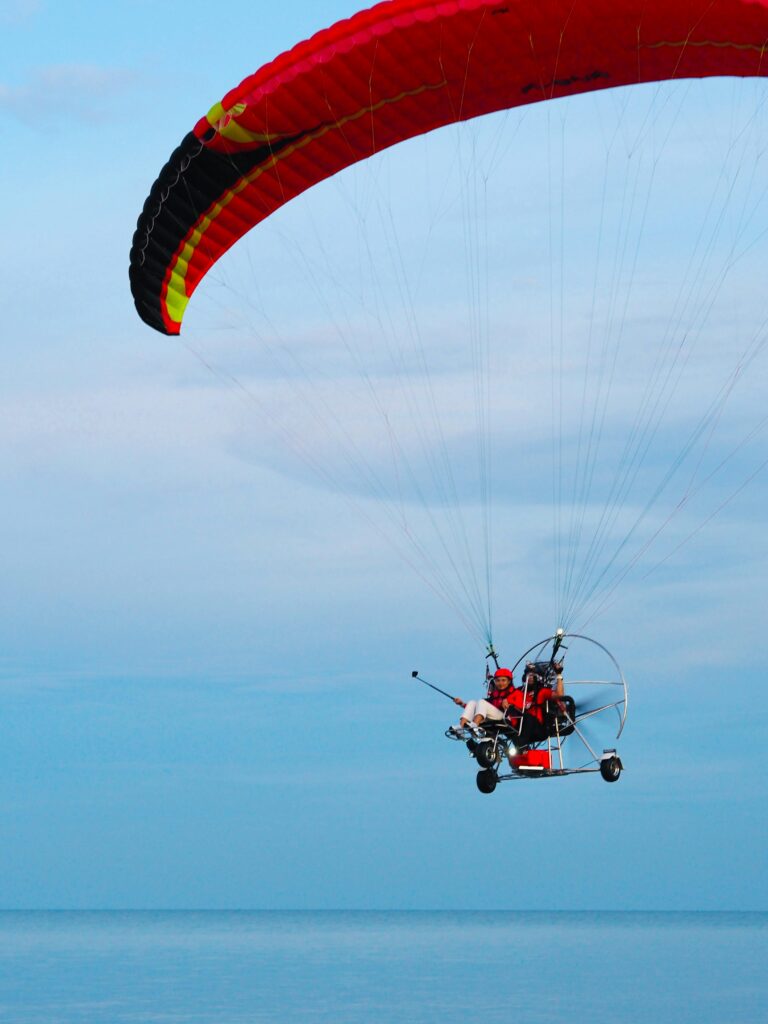
The allure of paramotor flying lies in its simplicity and accessibility. It offers the freedom of paragliding with the added benefit of powered propulsion, making it possible to fly in various conditions and terrains. Whether you’re looking for a new hobby, a unique way to travel, or an unforgettable experience, paramotor flying has something for everyone.
Conclusion
Paramotor flying is more than just an adventure; it’s an opportunity to connect with the sky in a way few others can. With the right training and equipment, you can experience the thrill of powered flight and discover the world from an entirely new perspective. So, why wait? Take the leap and let the skies become your playground.
